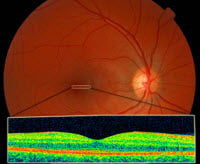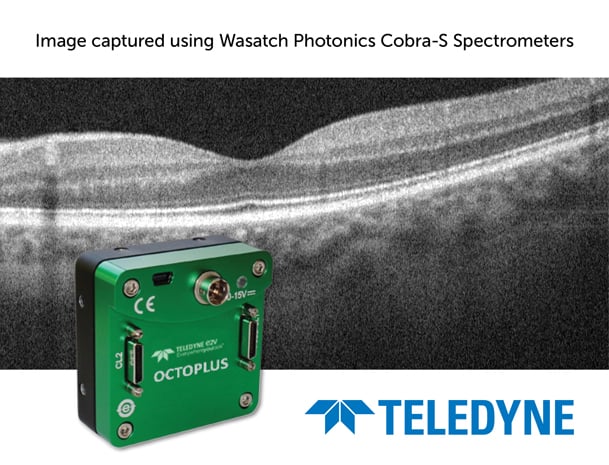Optical Coherence Tomography Imaging
Optical Coherence Tomography (OCT) is a technique for obtaining sub-surface images in opaque material. It uses the interference patterns from near-infrared reflections within tissues to provide cross-sectional images up to several millimetres deep. It finds important use in ophthalmology, particularly retinal imaging, due to a number of attractive benefits:
- Live sub-surface images at near-microscopic resolution
- Instant, direct imaging of tissue morphology
- No preparation of the sample or subject
- No ionizing radiation
- No side effects for the patient
Since the early 2000’s, Teledyne e2v have been using our expertise and patents to develop CCD and CMOS line scan sensors and cameras dedicated to Spectral Domain OCT which provide high sensitivity in the NIR region. Combined with our low noise and high-speed capabilities, this has enabled our customers to succeed in ophthalmological applications.
To build your ideal solution, check out our range of standard image sensors, cameras and our custom capabilities.


Increase Diagnostic Confidence with OctoPlus
The OctoPlus™ CMOS line scan camera family is a platform for SD-OCT and general spectrometry which enables wide 3D images and functional imaging. Benefits include:
- Improved signal roll-off for higher automated segmentation performance
- Highest axial resolution on the market for precise tissue/structure thickness measurement
- Highest speed on the market with with up to 250K Ascan/s acquisition speed which significantly increases the field of view
Typical applications include: retinal disease diagnosis (for early detection of age related macular degeneration, glaucoma), cornea surgery assistance (to ensure maximum treatment accuracy).
